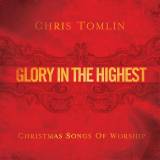Light Orchestrations
Light Orchestration arrangements are based on our standard orchestration arrangements that you know and love. But sometimes you just don't need a full orchestration - sometimes, less is more. These arrangements share the same lead sheet, piano part, and rhythm part and our standard Worship Band orchestrations, but with our Light Orchestrations, you will usually find a single instrument group to support that particular song. If the song is carried by strings, then it will have the string parts; if brass is dominant in the original recording, then that is what we have included. With fewer instrument parts, you still get to fill out your sound, but with a little less effort, giving your musicians the same confidence as they help lead the congregation in worship.
Orchestration Features
- Worship flow - The arrangements are designed for the flow of live worship. All parts have lyric cues and section numbers to aid players in keeping their place, giving the worship leader freedom to make impromptu changes as the Spirit leads or simply follow the chart as written.
- Rhythm section - The Rhythm part is for the section player (pianist, guitarist, or drummer) with all the specific rhythms and chords necessary for the arrangement. The Lead Sheet is a combination rhythm and vocal chart meant for the vocalists, worship leader, or rhythm player needing more vocal cues. The Piano-Vocal part includes a full piano part for those not comfortable with playing from a chord chart. When playing with a complete band the pianist would be advised to simplify this part in order to "stay out of the way".
- Vocals - We include an SAT Lead Sheet and an SAT Piano-Vocal score. When using the SAT part (soprano/alto/tenor), the baritone/basses should sing the melody (soprano) down an octave – any exceptions are listed on the score. When the part is written in unison, the men should sing it down one octave or it may be done as a solo. This method provides a contemporary sound that is very appropriate for modern praise music.
- Alternate keys - There is at least one alternate key included with every orchestration. It is chosen to accommodate a guitar‐based band, to give the orchestra a more playable key, or to make the vocal range more accessible.
- Rehearsal aids - Rehearsal numbers are given in the form of “1”, “2”, and “3”, providing the easy use of finger signals by the worship leader who may want to make impromptu changes during worship. Normally, “1” is the verse of the song, “2” is the chorus, and “3” is a bridge or other section, but there are exceptions. When a section is repeated in its entirety later in the arrangement, it is labeled “1a” or “2a”, etc. All endings and repeats are clearly notated to facilitate these impromptu changes. Finally, each instrumental part includes lyric cues to aid the player in keeping their place.
Instrumental Parts Included:
Rhythm Section
- Lead Sheet (SAT) - for worship leader and vocal team
- Piano/Vocal (SATB) - a piano part and SAT vocals
- Choir Sheet (SATB) - for the SATB choir
- Acoustic Guitar - modified rhythm part in capo keys
- Rhythm - detailed chart for keyboard, guitars and drums
Core Brass
- Trumpet 1-2
- Alto Sax (or Trumpet 3)
- Trombone 1 (or Tenor Sax 1)
Other Parts
- Trumpet 3 (doubles Alto Sax)
- Tenor Sax 1-2 (doubles Trombone 1-2)
- Trombone 2
- Bass Trombone (3)/Tuba
- Bari Sax (doubles Bass Trombone)
Additional Notes
The Light Orchestration Series has developed over time since 2008, under the names of the Praise Band Series and the Easy Band Series. Some arrangements may have some slight variations in instrumentation (for example a title may include strings instead of brass). However, you will be able to preview the exact parts included on the song detail page before making your purchase.


